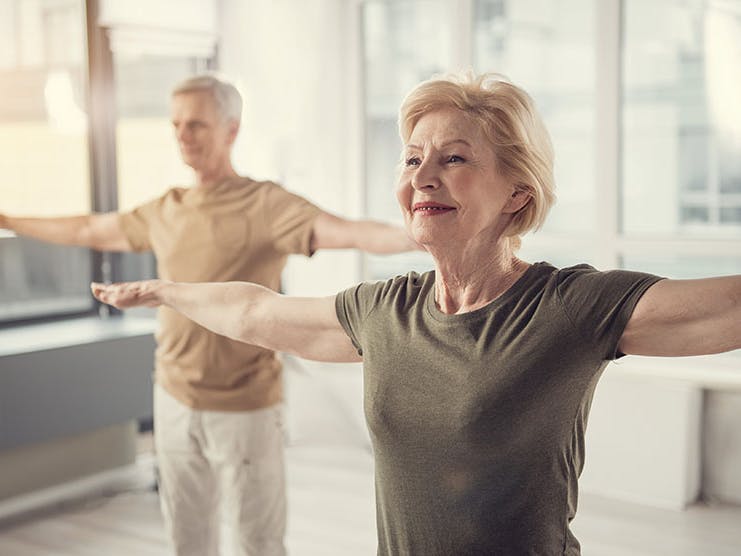
Your posture doesn’t just affect how you look. It can actually affect your overall well-being.
Mon-Thur 9am-7pm | Fri 9am-6pm EST
Did your mother tell you to stand up straight? Of course she did. And once again, she was right.
Poor posture can cause headaches, pain in the back and joints, and fatigue. And unfortunately, as we get older, we tend to slouch more.
Good posture is defined as a body position that maintains the natural curves of your spine, Lindsay Newitter, owner of the Posture Police, told Shape magazine, and it is unique to each person. Proper posture means “having a full range of motion in joints and being able to easily find a place that's centered and neutral,” she noted.
Risk factors for poor posture
Several factors can increase your risk of poor posture. A lack of exercise, obesity, and poor nutrition can all put you at greater risk.
Then there are daily habits. If you sit at a computer for long periods of time or look at your phone all day, your body can slowly become misaligned because of constantly hunched shoulders and a craning neck.
Your muscular fitness can also have a significant effect on posture. Weak core abdominal muscles make it difficult to comfortably maintain proper alignment. Muscle imbalance–having certain muscles weaker than others–can also aggravate poor posture.
Finally, as is so often the case, it’s in your genes. (You knew that part was coming, didn’t you?) Scoliosis, Scheuermann’s disease, and low bone mineral density can all have an effect on a person’s posture.
Check your posture
How is your posture right now? Your ribs should be lifted, your shoulders back and down, and your feet flat on the floor.
If this position feels like a strain, your posture probably could use some improvement. But don’t fret! There are several simple exercises and movements you can do to improve your posture over time.
Posture exercises
Here are some of the best exercises to try. Each can be done standing or sitting.
Chin tuck and jut
You can do this exercise while sitting or standing. To start, sit down and pull your chin straight back. Then, jut it forward in the opposite direction. Hold it there for a moment then relax and return to the natural position. Repeat the movement 10 times. This exercise helps to stack the neck bones so they’re in the neutral position.
Arm ups
Sit or stand with your arms at your sides. Breathe in as you raise your arms to shoulder height. Be sure that you are bringing your shoulder blades together in your back. Hold for a moment then return to your original position. Repeat this movement 10 times. This exercise improves the flexibility in your ribs.
Wall tilts
Stand with your back against the wall. Place your feet shoulder-width apart and look directly forward. Place one hand at your lower back and try to flatten your back while exhaling at the same time. Your hand should feel increased pressure. Then return to the resting position while inhaling. Repeat this movement 10 times. If the exercise is too difficult to do standing up, try to sit on a stool with your back to the wall and perform the exercise in the same way. This movement strengthens the muscles in the lower back and buttocks.
Shoulder circles
Sit in a chair comfortably. Lift your shoulders up, back and then down. Breathe normally while performing the exercise: Repeat it 10 times. This exercise creates space and flexibility in your ribs and shoulders.
Spine extensions
Sit or stand with your arms at your sides. Slowly inhale while you pull your spine as tall as possible. Hold for a few seconds then release, exhaling and returning to a relaxed position. Repeat this movement 10 times. This helps to correct hunched posture, while also stretching the muscles in the chest.
To see improvements in your posture, do these exercises daily for several weeks, and then continue regularly to maintain your improved posture.
In addition to these specific movements, exercising, stretching, weightlifting, and balance training will help improve your posture and overall fitness level as well. As always, consult with your doctor before starting any exercise program.
Additional resources
- ClearMatch Medicare: Find a Medicare Plan
- ClearMatch Medicare: 6 Free Online Workouts Perfect for Older Adults



